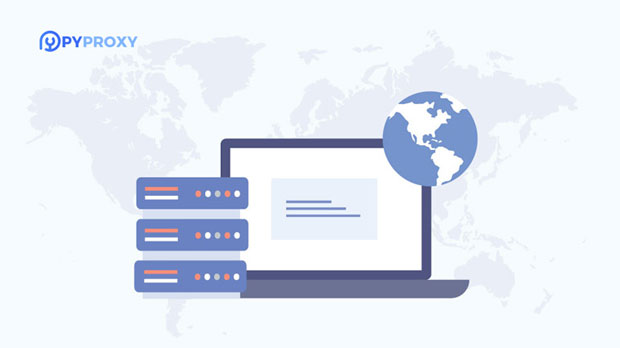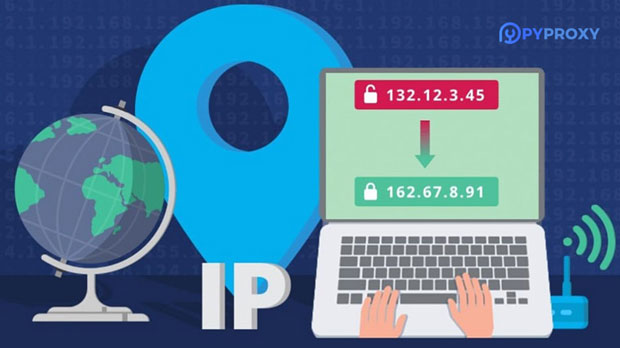In the world of online privacy and security, socks5 proxies are commonly used to mask users' real IP addresses, providing a level of anonymity. However, when it comes to residential Socks5 proxies, verifying their authenticity becomes crucial. Unlike datacenter proxies, which are often easily detected, residential proxies use real IP addresses assigned to homes, making them harder to identify as proxies. This article explores several methods to verify the authenticity of residential socks5 proxy IP addresses, focusing on practical techniques that offer valuable insights for users looking to ensure the legitimacy of the proxy services they use. This verification process is important for businesses, marketers, and anyone concerned about online privacy, security, and the reliability of their internet traffic routing. Understanding Residential Socks5 ProxiesBefore diving into the methods of verifying residential Socks5 proxies, it's essential to understand what they are. A Socks5 proxy is a type of internet protocol that routes your internet traffic through a third-party server. Unlike traditional proxies, Socks5 supports a broader range of traffic types, making it more versatile. Residential Socks5 proxies specifically are IP addresses tied to real-world residences, not datacenters, which makes them harder to detect as proxies. These proxies are typically used for a range of activities like web scraping, accessing geo-blocked content, or protecting online anonymity.Despite their advantages, the authenticity of these proxies can be difficult to ascertain. If you're using them for sensitive activities, such as accessing financial accounts or performing critical business tasks, ensuring that the IP addresses provided are genuine is crucial.Why Authenticity MattersVerifying the authenticity of a residential Socks5 proxy is critical for several reasons. First, authenticity ensures that the proxy is genuinely associated with a real residential IP address. Many proxy users rely on these proxies to avoid detection by websites that track IP addresses, especially those that may block known proxies or IP ranges. Fake proxies can lead to unreliable connections, and potentially compromise online activities such as accessing region-restricted content or conducting web scraping operations.Additionally, authenticity guarantees that the proxy service is legitimate and not a fraud. In some cases, individuals or companies may unknowingly use proxies that have been hijacked or are part of a botnet, leading to potentially harmful consequences like malware infections or identity theft.Methods to Verify Residential Socks5 Proxy IP AuthenticitySeveral techniques can be employed to verify the authenticity of residential Socks5 proxy IP addresses. These methods are designed to confirm whether the IP addresses being used are genuinely residential and not part of a larger datacenter network or a fraudulent proxy setup.1. Reverse DNS LookupA reverse DNS lookup involves querying the domain name system to find the associated domain name of an IP address. Residential IPs typically have a reverse DNS that reflects their assigned ISP or internet service provider. In contrast, datacenter proxies or fraudulently obtained residential proxies may show generic or suspicious domain names. By performing a reverse DNS lookup, you can check if the IP address resolves to a legitimate, residential ISP. This is one of the easiest and quickest ways to assess whether a proxy is genuinely residential.2. Geo-Location TestingAnother effective method for verifying the authenticity of a residential Socks5 proxy is geo-location testing. Residential proxies are usually geographically tied to specific areas, corresponding to the actual location of the person or household that owns the IP. By running a geo-location check on the IP address, you can ensure that it is located in a valid region and aligns with the claimed residential location. Many proxy providers will offer tools that display the geographical region of the IP, allowing you to cross-check and confirm if the proxy IP is consistent with its supposed residential nature.3. Proxy Detection ToolsSeveral proxy detection tools can help you detect whether an IP address is genuinely residential. These tools look for signs such as the presence of known proxy patterns, IPs from data centers, or anomalous behavior like rapid switching of IP addresses from one location to another. Advanced tools may also analyze the likelihood that an IP address is residential based on traffic patterns and historical data. By using these detection tools, you can verify if the proxy is likely to be residential or flagged as suspicious.4. Check for IP ReputationIP reputation checks are vital when assessing the authenticity of a residential proxy. Many IP addresses have reputations built over time based on their activity. Some proxy IPs are flagged as suspicious due to previous malicious activities, such as spamming or unauthorized access attempts. By using IP reputation services, you can assess whether the IP address you are using has been reported or blacklisted for dubious activities. This check can provide peace of mind, ensuring that the residential Socks5 proxy is not associated with any harmful or fraudulent activities.5. Test for ConsistencyAuthentic residential Socks5 proxies typically maintain a consistent IP address over a period of time, reflecting their stable nature. On the other hand, proxies that rotate too frequently or change their IP addresses unpredictably might indicate that they are part of a botnet or a suspicious proxy network. By monitoring the IP address and ensuring it remains stable over time, you can gauge whether the proxy is a legitimate residential one. Proxies that constantly switch locations or IPs may also have higher chances of being flagged as suspicious.6. Check for Unusual Traffic PatternsAnother important verification method is analyzing traffic patterns. Residential Socks5 proxies are typically used for natural and consistent browsing behavior. In contrast, proxy networks, especially fraudulent ones, tend to exhibit unusual traffic patterns, such as rapid request sequences, excessive volume, or irregular access times. Using traffic analysis tools, you can monitor the type and frequency of requests made through the proxy. If the traffic seems unusually high or irregular, it could be an indication that the proxy IP is not authentic.7. User Feedback and Reputation of Proxy ProvidersAlthough you are verifying the authenticity of an individual IP address, the reputation of the proxy provider is also essential. User reviews, forums, and online discussions can offer insight into the reliability and authenticity of a proxy service. While it's important to avoid basing your judgment solely on others' opinions, multiple users' experiences can provide valuable information about the trustworthiness of the proxy provider. Providers that consistently deliver high-quality, authentic residential proxies are likely to have positive feedback from users.ConclusionVerifying the authenticity of a residential Socks5 proxy IP address is essential for anyone relying on these proxies for online activities. Whether you're concerned about privacy, security, or reliable access to geo-restricted content, it’s important to use effective methods like reverse DNS lookups, geo-location testing, and traffic analysis to confirm that the proxy IP is legitimate. By employing a combination of these techniques, you can safeguard your online operations and ensure that your residential Socks5 proxy IP addresses are trustworthy, secure, and effective.
Jan 14, 2025




























































